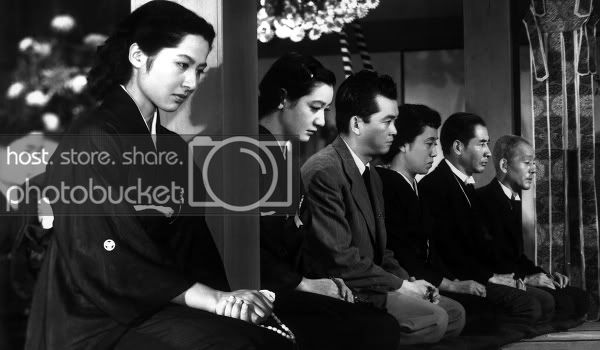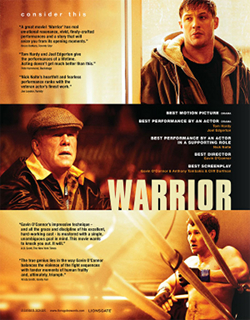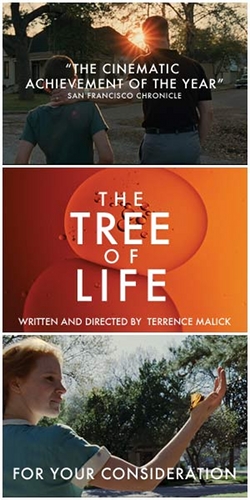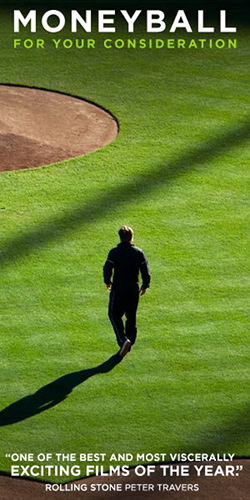Top Ten: Japanese Films
A national cinema is a difficult thing to quantify; do cultural norms and common geography really tie together an entire nation’s movie output? What can be said to characterize the single country that produced both Michael Bay and John Cassavetes? Nonetheless, we’ll examine several nations and try to pick our favorites from among some pretty wide and diverse ranges.
Next Projection already tackled French films earlier this year, so this series will begin with the equally-impressive Japan, the land of the rising sun. Despite so many of its prewar films being lost, Japan has since blossomed into one of the most widely varied national cinemas in history, encompassing meditative dramas, frenetic action films, ghoulish horrors, and raucous comedies. This week’s Top Ten Tuesday explores the top ten films from Japan.
>> Readers’ Selections
1. Seven Samurai (1954)
2. Tokyo Story (1953)
3. Rashômon (1950)
4. Battle Royale (2000)
5. Sansho the Bailiff (1954)
6. Tonari no Yae-chan (1934)
7. Love Exposure (2008)
8. Akira (1988)
9. Tokyo Twilight (1957)
10. My Neighbor Totoro (1988)
>> Adam’s Selections
10. Funeral Parade of Roses (1969)
Funeral Parade of Roses is a raucous, avant-garde, shaggy-dog transformation of a cross-dressing rivalry with elements of Oedipus Rex, all of it filtered through the underground gay scene of late 1960s Tokyo. Director Toshio Matsumoto’s debut mixes-and-matches fiction and documentary, sometimes splicing in talking head-style interviews with the actors within the scene being acted out. Nothing seems off-limits either in the world depicted or in the film itself, the frame exploding into pop-art montage or equal parts transgressive sexuality and grindhouse bloodletting. Rock and roll gives way to strutting contests makes way for comedic interjections leads to political treatises in this endlessly dynamic from when cinema was testing all boundaries.
9. A Wife Confesses (1961)
This hard-to-find but searing existential drama comes from the iconoclast Japanese filmmaker Yasuzo Masumura. Ostensibly a courtroom drama continually interrupted by flashbacks, it concerns a professor’s wife (Ayako Wakao) having an affair and the mountain-climbing accident involving all three that leads to her trial for murder. Relatively academic discussions by attorneys of her motivations are intercut with the reality being debated, further refining her guilt or innocence and putting the viewer in the place of the omniscient juror, leading finally to the stark images of what really happened, deflated of all melodrama. Wakao’s tortured protagonist and her young salesman lover (Hiroshi Kawaguchi) find themselves bound, before and after her tyrannical husband’s death, by the strictures of Japanese social expectations involving sex, money, and guilt. The individual’s plight against the power and cynicism of institutions constituted an element of Masumura’s thematic concerns, and A Wife Confesses plays out beautifully but tragically in just those terms.
8. I Was Born, But… (1932)
A bright, penetrating social comedy from Yasujiro Ozu, I Was Born, But… looks at and finds adulthood wanting through the clear eyes of adolescence. A family with two sons moves into a Tokyo suburb, and both the father and brothers must get acclimated to their new social orders. The sons play truant to avoid the local bullies but eventually an older boy helps them become tops amongst the neighborhood gang. Their new sense of rightful hierarchy is shattered when visiting the house of a gang kid’s father, their dad’s company boss, and discover via a home movie that their own father plays the fool to ingratiate himself. The constant negotiations and messily fluid relationships of growing up suddenly become not so different than what they experience on the schoolyard, and even the most honorable elder must kowtow sometimes. The child actors remain recognizably silly but scarily perceptive, and their comings-of-age point towards the minor victories and bittersweet disappointments of Ozu’s masterpieces to come.
7. After Life (1998)
Hirokazu Koreeda’s high-concept dramedy is poignant, moving, and essentially humanistic. It’s set in a supernatural holding area between earth and the afterlife where the recently deceased are allowed one memory to be reenacted by the staff and kept as the only tangible connection to their previously physical existence. Such a concept is rife with overemotional pitfalls, but Koreeda’s deft mixture of fiction and documentary (casting professional actors as the staff and nonprofessionals as the clientele), along with a cleverly mundane set design for the heavenly way station, trades sentiment for naturalism. Even the crew’s reenactments eschew special effects and instead resemble working film sets, explicitly comparing moviemaking to recapturing an elusive perceptual memory shaded and reconfigured by time. The cases between staff counselors and newly dead clients vary as widely as the spectrum of possible emotional states when faced with mortality, and Koreeda treats them all with deeply human sympathy.
6. Pulse (2001)
Kiyoshi Kurosawa followed up his quasi-mystical chillers Cure and Charisma with an even more expansive and apocalyptic effort, Pulse. The film portrays a world where ubiquitous technological communication via the Internet has only alienated its users, providing a portal for despairing spirits to interact with the land of the living. Yet the storytelling is so suggestive and elliptical that what comes through strongest are an enveloping dread and an isolating confinement, facilitated by such scenes of inexplicable cerebral horror as finding yourself watched by an invisible webcam or see a slow-motion ghost stalk you down a corridor. Kurosawa’s mastery of mood and sound makes Pulse more than the typical J-horror outing, replacing mere jump scares and pale kids with more existentially unnerving elements.
5. Humanity and Paper Balloons (1937)
A fortunately surviving example from the career of 1930s filmmaker Sadao Yamanaka, this, his last film, is a unrepentantly downbeat slice of achingly beautiful poetic realism set in the 18th century Tokugawa era of Japanese history. A run-down area of Tokyo houses a multitude of bustling characters just trying to get by in the depressed feudal society. Humanity and Paper Balloons features a dense, crisscrossing collage of narrative strands and intersecting characters, ultimately converging on down-on-his-luck barber and gambler Shinza’s (Kan’emon Nakamura) and ronin Unno’s (Chôjûrô Kawarasaki) plan to ransom a villainous merchant’s daughter. The film strives to frame its ensemble’s collective existence within the grimy, dog-eat-dog tenement milieu, with its central lane connecting the network of homes and businesses that will subsequently be explored. Ordinary people struggle to survive, rising to the level of hero or sinking to the level of villain according to their meager fortunes and destinies.
4. Throne of Blood (1957)
Still the best known and admired of Japanese filmmakers in the West, Akira Kurosawa’s muscular, humanistic films cover a wide of genres, and several could be considered my favorites; I decided on his Macbeth adaptation Throne of Blood for its mesmerizing and haunting dream-like imagery and the many weird and wonderful performances, not least among them by the singular Toshirō Mifune as the Macbeth analogue, Washizu. More than any other adaption of Shakespeare’s bloody work, Kurosawa’s captures best the play’s world of fog and greed and death, transmuting the original Scottish setting to feudal Japan without any loss of grim violence. Reality slips into the supernatural with such stark, eerie, and moody stillness that witches seem as natural as trees. Isuzu Yamada’s Asaji is perhaps even more megalomaniacal and unrepentant than the stage’s Lady Macbeth, disturbingly calm and calculating. Justly celebrated in the ghastly, frenzied finale where Washizu struggles to outrun his fate in the form of a shower of arrows, and Mifune’s evident distress lends immeasurably to his intense performance.
3. Tampopo (1985)
After his gently satirical debut The Funeral, writer-actor-director Jūzō Itami made his riotously entertaining so-called “ramen Western,” Tampopo. Various stories concerning food, sex, death, and the interplay between Japanese and Western cultures cross paths in surprising and frequently hilarious ways, but the main narrative strand is about down-on-her-luck roadside cook Tampopo (the writer-director’s wife and frequent leading lady Nobuko Miyamoto) and her quest to become a better noodle chef. To assist are rugged truck driver Goro (Tsutomu Yamazaki), his young sidekick Gun (Ken Watanabe), and a Seven Samurai-style assembled team of culinary experts. Within this loose structure are vignettes on the zen-like nature of good noodle eating, a reappearing gangster (Kōji Yakusho) and his sexual exploits with his moll that frequently involve food, and lessons in Western-friendly, non-slurping ramen etiquette. Fleet and chock full of funny moments, Tampopo remains one of the great Japanese comedies and a paean to good eating.
2. Sansho the Bailiff (1954)
Kenji Mizoguchi was a master of the jidaigeki, a genre of Japanese historical film, and possibly the greatest director of women in cinema history. First among equals in his profoundly beautiful works of the 1950s is Sansho the Bailiff, a moving tale of despondency, redemption, and transcendence. The film chronicles the travails of an aristocratic family, the young brother and sister of which are sold into slavery to the eponymous Sansho and struggle to make their way out after growing up in such abjectness. The sister, Anju (Kyôko Kagawa), remains steadfastly loyal to her virtuous governor father’s teachings, while her brother Zushio (Yoshiaki Hanayagi) succumbs to the anger and hatred of working as a slave. Their escape comes at great self-sacrificial cost, and the quest to reunite with their mother leads to a heartbreaking, unimaginably poignant final scene. Mizoguchi renders all of this stark drama with his trademark fluid grace and richly ordered mise-en-scene, his benevolent god’s-eye view keeping watch on the best and worst of humanity.
1. Tokyo Story (1953)
Yasujiro Ozu’s entire canon of films presents a distinctly modern world of quiet compromise and an acute sense of the passage of time, with Tokyo Story perhaps his most representative achievement. Shorn of superfluous moralizing or sentimentality (despite Ozu himself calling it one of his “most melodramatic pictures”), the film simply follows an elderly couple as they visit their children and grandchildren, with the inevitable guilt and neglect that such burdensome multigenerational arrangements evince. Such a threadbare plot combines with Ozu’s stoic visual style and sharply-drawn, well-rounded performances (especially from Chishu Ryu as the grandfather and Setsuko Hara as the widowed daughter-in-law) to make Tokyo Story nearly as universal a motion picture as can be imagined. Although set in a busy, bustling Tokyo and wedded to a distinctly Japanese aesthetic, the film’s unaging theme of familial disappointment resonates across boundaries both chronological and geographic.
-
Anonymous
-
http://twitter.com/NextProjection Christopher Misch
-
http://articlestoeditors.com/suggestions-for-selecting-the-right-car-rental-firm control de vehiculos















 Review: The Players vs Angeles Caidos (1969)
Review: The Players vs Angeles Caidos (1969) Review: War Horse (2011)
Review: War Horse (2011) Subversive Saturday: Fando y Lis (1968)
Subversive Saturday: Fando y Lis (1968) Review: Sherlock Jr (1924)
Review: Sherlock Jr (1924) Review: Benny’s Video (1992)
Review: Benny’s Video (1992)




